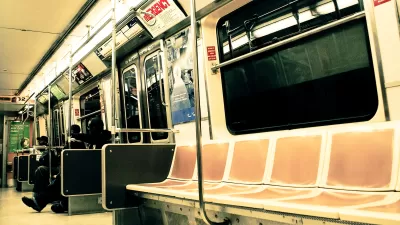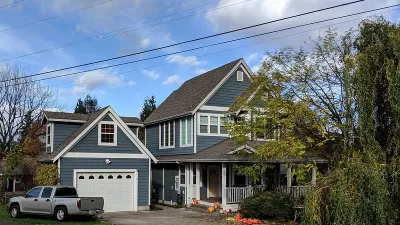The geography of work in New York City must include an analysis of the larger region, according to a new report from the New York City Department of City Planning.

The New York City Department of City Planning (NYC Planning) recently released a report that maps jobs in the larger region, committing to a narrative that connects the planning challenges faced by the numerous independent authorities in the region.
From the report:
Recognizing that the health of NYC’s economy is highly interconnected to the performance of the Region, the NYC Department of City Planning’s Second Edition of this report examines employment, labor force, and housing patterns from 2000 to today, with a focus on annual change and the differences between pre- and post-Great Recession change. This report examines recent economic changes at a “subregional” scale, looking at the relationships among NYC, northern New Jersey (“North NJ”), Long Island, southwest Connecticut (“Connecticut”), and the Hudson Valley.
The report includes four "insights":
- Employment growth continued to concentrate in NYC and job gains in all five boroughs drove the Region’s growth after the Great Recession. Though job growth slowed in the last few years, NYC continued to outpace all other parts of the Region.
- The Region experienced varied growth across sectors. Office gains—the highest value employment—concentrated in NYC, while institutional sectors served as the largest source of employment and wage growth elsewhere in the Region. Industrial and local services sectors supported economic gains after the Great Recession, but that growth is slowing.
- NYC gained young workers, while the rest of the Region’s labor force is aging. NYC and North NJ account for most of the Region’s new housing development, particularly post-Great Recession. Areas gaining labor force correlate with areas adding housing.
- Shifts in the geography of job growth, housing production, and resident labor force change are tipping the balance of employment and housing within the Region, with implications for affordability, commuting patterns, and transportation infrastructure.
The "insights" function as chapters in the report, so a lot of data and infographics are provided to back up each of those claims.
FULL STORY: The Geography of Jobs [pdf]

Alabama: Trump Terminates Settlements for Black Communities Harmed By Raw Sewage
Trump deemed the landmark civil rights agreement “illegal DEI and environmental justice policy.”

Planetizen Federal Action Tracker
A weekly monitor of how Trump’s orders and actions are impacting planners and planning in America.

The 120 Year Old Tiny Home Villages That Sheltered San Francisco’s Earthquake Refugees
More than a century ago, San Francisco mobilized to house thousands of residents displaced by the 1906 earthquake. Could their strategy offer a model for the present?

Opinion: California’s SB 79 Would Improve Housing Affordability and Transit Access
A proposed bill would legalize transit-oriented development statewide.

Record Temperatures Prompt Push for Environmental Justice Bills
Nevada legislators are proposing laws that would mandate heat mitigation measures to protect residents from the impacts of extreme heat.

Downtown Pittsburgh Set to Gain 1,300 New Housing Units
Pittsburgh’s office buildings, many of which date back to the early 20th century, are prime candidates for conversion to housing.
Urban Design for Planners 1: Software Tools
This six-course series explores essential urban design concepts using open source software and equips planners with the tools they need to participate fully in the urban design process.
Planning for Universal Design
Learn the tools for implementing Universal Design in planning regulations.
Clanton & Associates, Inc.
Jessamine County Fiscal Court
Institute for Housing and Urban Development Studies (IHS)
City of Grandview
Harvard GSD Executive Education
Toledo-Lucas County Plan Commissions
Salt Lake City
NYU Wagner Graduate School of Public Service





























